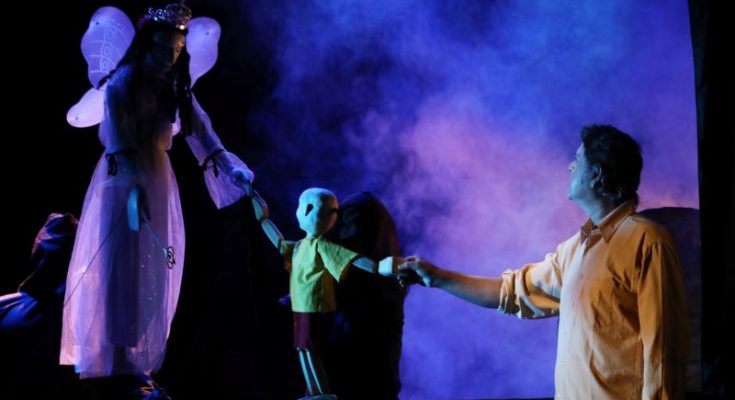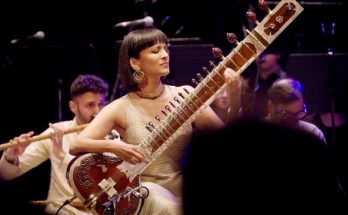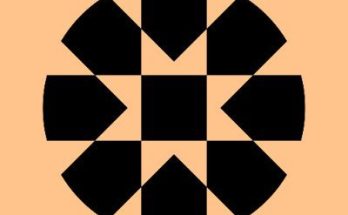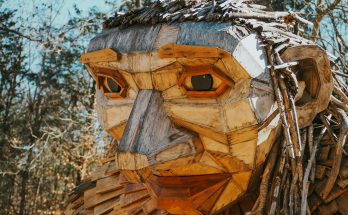IBNS/Italian writer Carlo Collodi’s Pinocchio’s Adventures travelled out of children’s books to be retold by the folk artists of Bengal in three different and unique renditions through puppetry, Pata Chitra, and mixed media at Kolkata’s Madhusudhan Mancha on Saturday.
Organized by FREED in collaboration with the Consulate General of Italy in Kolkata, the show was performed by “The Dolls Theatre”, displaying a synthesis of traditional art with modernity as artists narrated Pinocchio’s journey of transformation from being created as a wooden marionette to a real human.
The Adventures of Pinocchio is a children’s novel by Italian writer Carlo Collodi, written in Pescia. It is about the mischievous adventures of an animated marionette named Pinocchio and his father, a poor woodcarver named Geppetto.
Of the traditional forms of puppetry found in Bengal — rod, glove and string- in the first performance, the audience witnessed traditional glove puppeteer Rampada Ghoroi manoeuver his Beni or Bene Putul (hand puppets manipulated with the thumb, middle, and forefingers) to narrate Pinocchio’s story.
Ghoroi performed the story in a solo act, manoeuvering his glove puppets using two hands, singing, narrating, and giving dialogues to the characters all by himself.
Ghoroi, who is originally a resident of Padmatamali village of East Medinipur district, had never heard of Pinocchio though he has performed children’s stories and tales several times.
“My existing puppets were not fit for this performance. This character somewhat looks like a cartoon character with disproportionate features such as a long nose and large ears,” he said.
“Since this was going to be my maiden performance on this story, I crafted the doll with a long nose and big ears but dressed it in the usual way in bright and shiny clothes and jewellery,” he added.
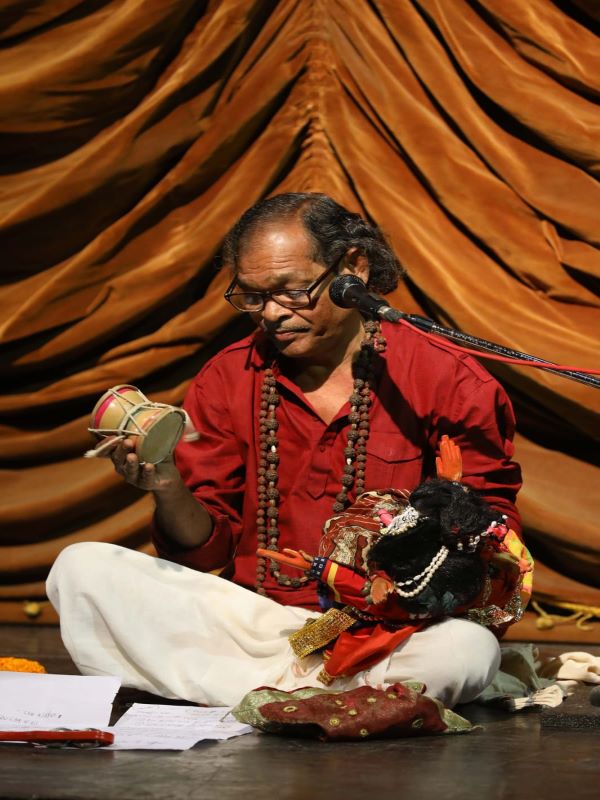
Ghoroi said he would like to perform on similar stories where characters look different from what puppeteers like him are accustomed to.
“This was my first experience at telling the story from a different country of this type of character. It will take some time to sink in and I would love to reproduce this performance again if given a chance,” he added.
In another performance, well-known Pata Chitra artist Manimala Chitrakar retold the story in the traditional form of the Medinipur region of Bengal in eastern India, using a long scroll with scenes of the story painted as frames, accompanied by a song.
‘Patuas’, as these artists are called for using ‘pat’ or a long piece of cloth to sequence the various events of the tale, relate the story in the form of a song, which they write and compose, depending on the audience.
For Manimala, too, this was the first time presenting Pinocchio in this traditional art form, which, she said, was an enjoyable experience for her.
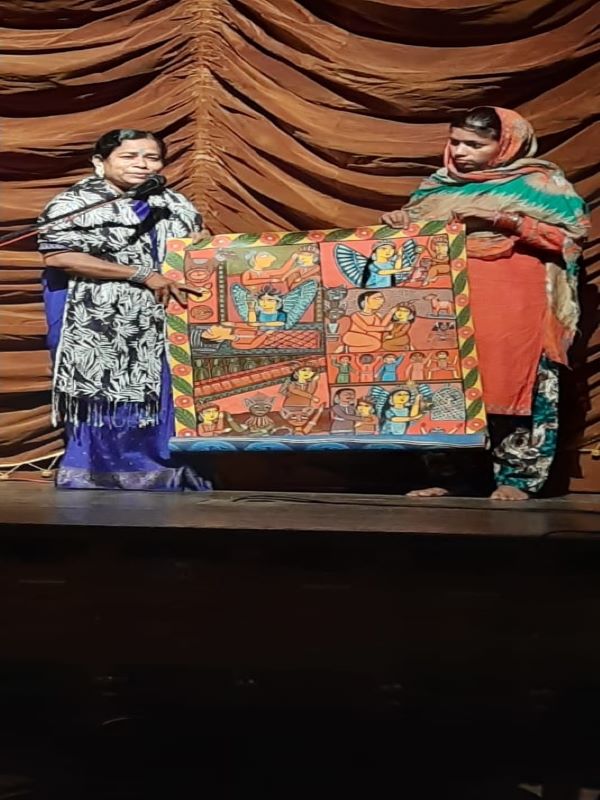
So far she has related mostly mythological and religious stories and used the medium to convey social messages as part of government projects.
“This was a brand new opportunity for me. Since Pinocchio’s story has a message for kids, I wrote the song addressing school-going children, to take Pinocchio’s example and not fall for bad elements,” she explained.
In the last presentation, The Dolls Theatre performed the story using different types of puppets, including hand and string puppets, to play most of the roles while actors played some of the characters. Stage props, lighting, background voice artists along with songs allowed for a more elaborate explanation of the tale than the earlier mediums.

Sudip Gupta of The Dolls Theatre noted that puppetry can be used as a medium to reach the masses, especially children, and many countries across the world are utilising it to convey messages apart from storytelling and entertainment.
“However, no other country can boast of diversity in puppet traditions like India where every state has its own unique type of puppets. Puppetry in India is very much alive and a lot of work is being done by contemporary puppeteers like us, who are using traditional forms along with other media to get a better grip of viewers’ imagination,” he said.
Consul General of Italy, Dr Gianluca Rubagotti, said the programme was an effort to put together the age-old cultural elements of Italy and India and part of larger Indo-Italian collaboration plans with local artists.
Sharing his views on the performances, he said, “It was very nice. I have also seen the rehearsals and witnessed how much work and passion is put into the realization of these shows. From the outside, these performances look very simple but I can tell you how much hard work goes behind them.”

“The idea was to tell a story, which is Italian in its origin but has a universal message, through local artists, in this case, puppeteers and Pata Chitra. We gave them the inspiration, which was enacted through forms of art that are typical of this part of the world but again have a wider appeal,” Rubagotti said, explaining the concept behind the project.
A good way to create a fusion is to intertwine the two cultures, he opined, adding that the Italian Consulate has been undertaking many such projects through cinema, theatre, visual arts, literature, etc.
#BengalPuppetry, #PinocciosAdventures, #ItalianWriter, #BengalArtists

